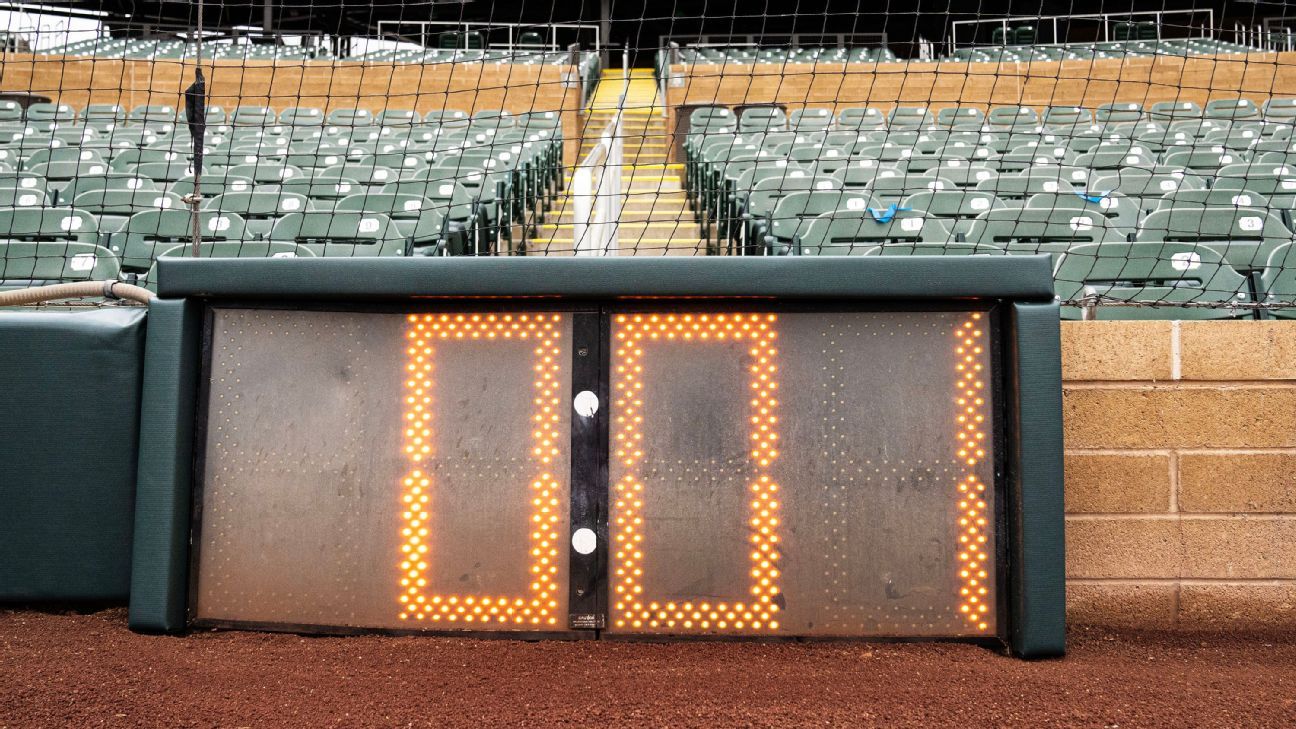The use of a pitch clock shaved 26 minutes off of spring training games this year compared to last year as Major League Baseball is set to use it for the first time in the regular season beginning on Thursday.
Games lasted 2:35 this spring compared to 3:01 in 2022 as pitchers were given 15 seconds between pitches to throw the ball when the bases were unoccupied and 20 seconds when runners were on-base.
MLB regular season games averaged 3:03 last season.
The reduction in game times is in line with experiments done in the minor leagues with a pitch clock over the past several seasons. Spring games were also 35 minutes shorter than WBC games — which didn’t use a clock — even though there were more runs scored per game in spring training than the WBC, 10.2 to 9.9.
Enforcement of the clock was a major storyline during the spring. A ball is added to the count if a pitcher is found in violation of the clock. If a hitter isn’t in the batter’s box and ready to hit with eight seconds remaining, he’s given a strike. Violations for hitters and pitchers decreased week-to-week during spring games with a slight increase at the end.
Week 1: 2.03 violations per game
-
Week 2: 1.49
-
Week 3: 1.13
-
Week 4: 1.03
-
Week 5: 1.24
-
Week 6 (2 days): 1.48
Other rule changes set to go in effect on Thursday also impacted spring games:
• Bigger bases and a limit on disengagements from the pitching rubber increased stolen base attempts from 1.6 per game to 2.3. The success rate on those attempts increased from 71.3% to 77.1%.
Bases increased three square inches this year in an attempt to reduce injuries and create more action on the base paths while pitchers can only step off the rubber two times per plate appearance. A third disengagement must result in an out or else a balk will be issued.
• The elimination of the shift and the requirement of all infielders to start on the infield dirt significantly increased the batting average on balls in play for left-handed hitters, from .314 to .327. It remained almost the same for righties (.311/.310). Overall, this spring’s .317 BABIP for hitters is the highest since at least 2016, according to league data.
Runs per game remained similar one year to the next, with MLB teams scoring a combined 10.6 per game last year compared to 10.2 this spring. Same goes for overall batting averages which were .259 last year and .257 this year.
The league’s goal to increase action and pace of game seems to have worked during the spring. Officials will be watching carefully if it carries over to the regular season.
